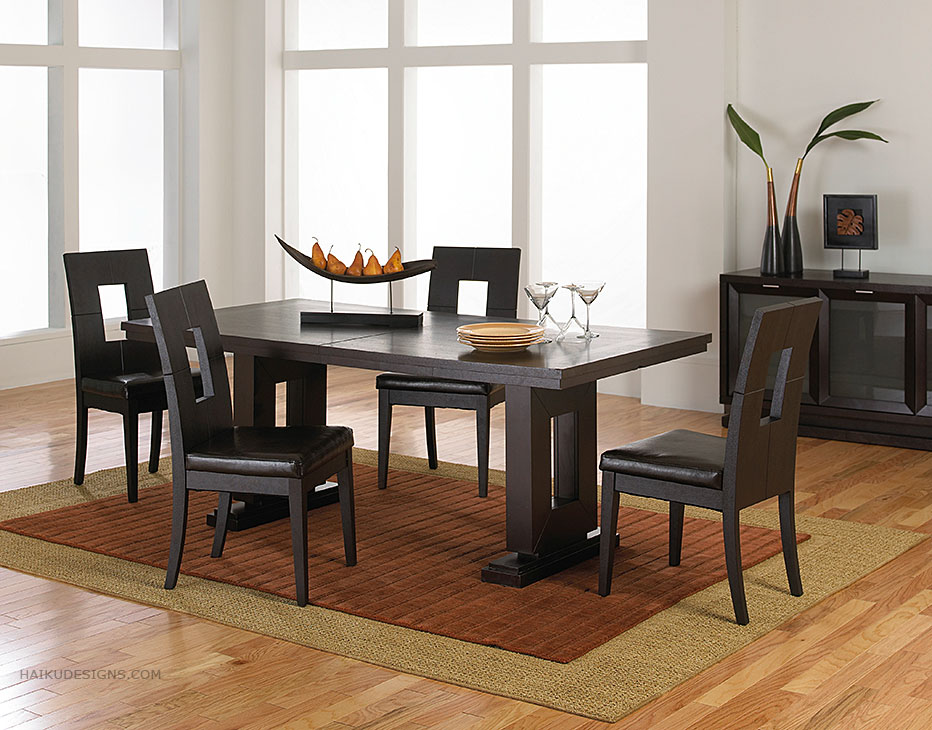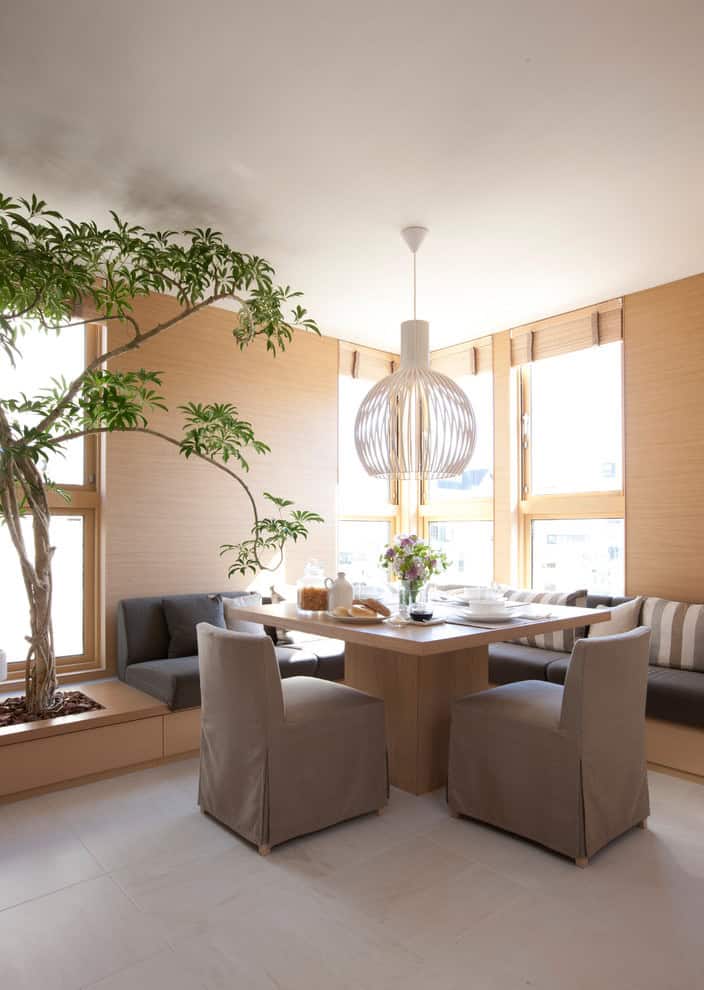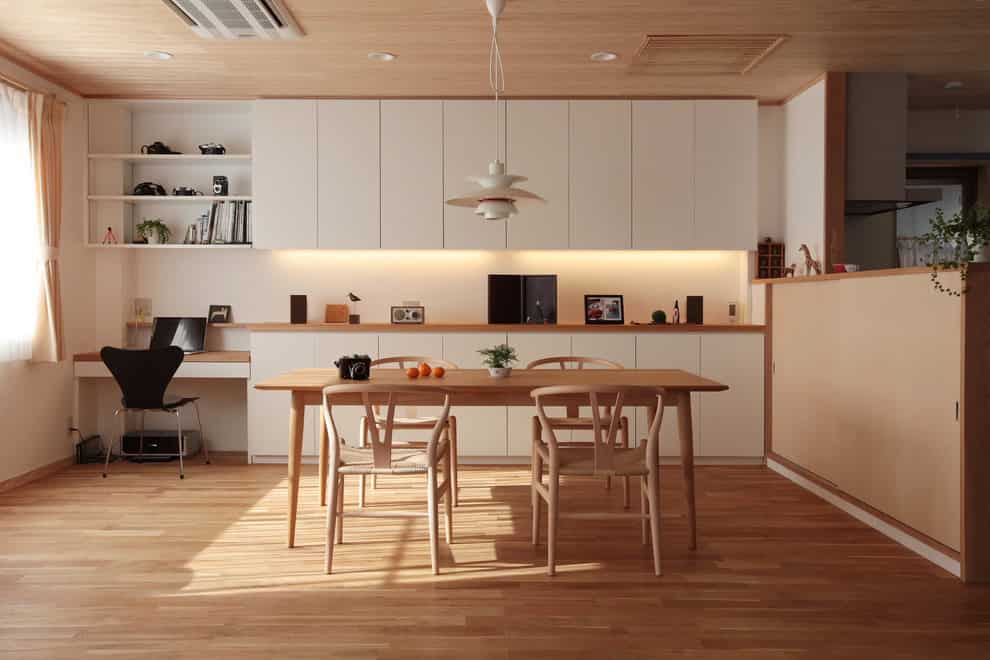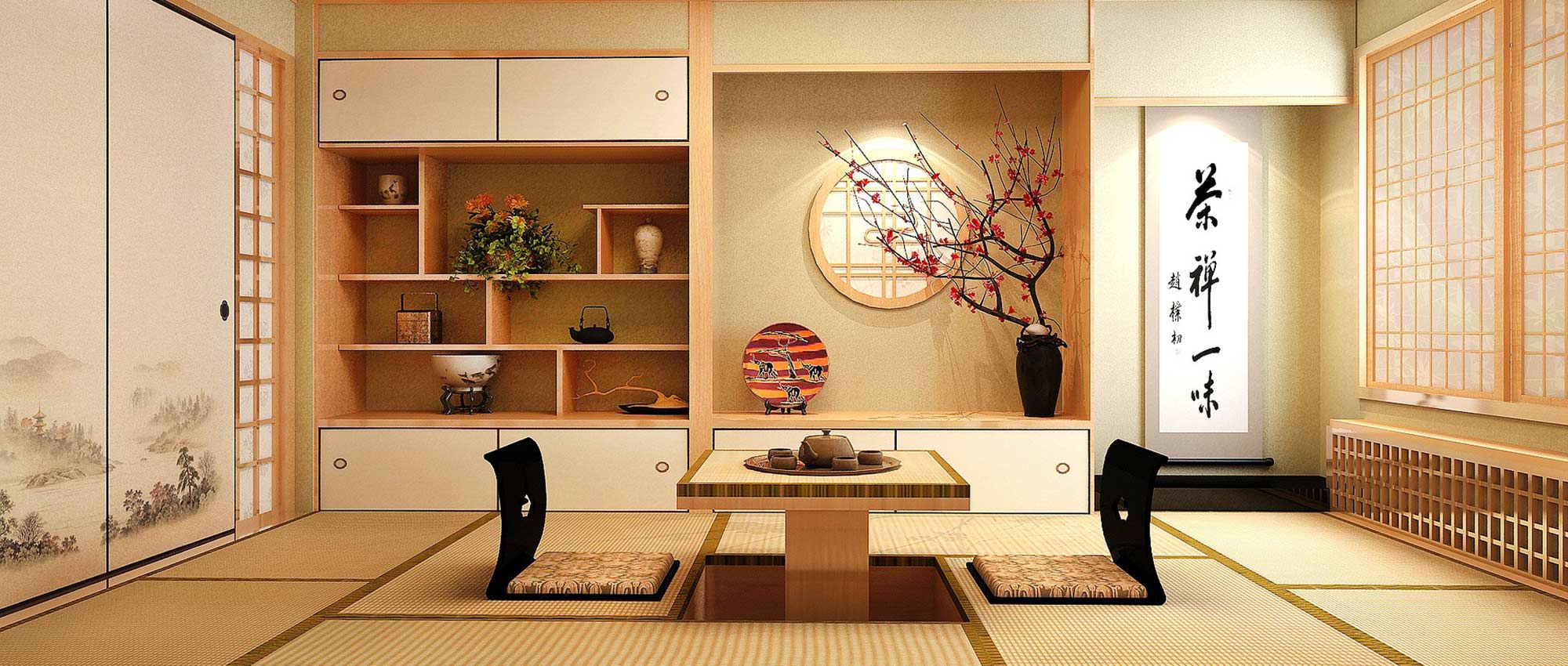If you're looking to create a serene and elegant atmosphere in your dining room, then a Japanese style design may be just what you need. With its clean lines, natural materials, and minimalistic approach, Japanese design is all about simplicity and harmony. Here are 10 Japanese dining room design ideas to inspire you.Japanese Style Dining Room Design Ideas
The traditional Japanese dining room, or chashitsu, is a serene and calming space that is designed for enjoying a cup of tea and a light meal. The room is typically small and features a low dining table, floor cushions, and a tokonoma, a built-in alcove where art or flowers are displayed. The use of natural materials such as wood and rice paper creates a warm and inviting atmosphere.Traditional Japanese Dining Room Design
For a more contemporary take on Japanese design, consider incorporating modern elements into your dining room. This can include sleek and simple furniture, a neutral color palette, and clean lines. Don't be afraid to mix in some traditional Japanese elements, such as a shoji screen or a low dining table, to create a unique and stylish space.Modern Japanese Dining Room Design
Minimalism is a key aspect of Japanese design, and this applies to the dining room as well. Keep the space clutter-free with only essential items, and choose furniture and decor that has a simple and clean design. A muted color palette, such as whites, grays, and natural wood tones, will help create a calm and uncluttered atmosphere.Minimalist Japanese Dining Room Design
If you don't want to fully commit to a Japanese style dining room, you can still incorporate some Japanese-inspired elements into your design. This can include using traditional Japanese colors, such as red, black, and gold, or incorporating natural materials like bamboo or stone. A few well-placed decor pieces, such as a Japanese lantern or a bonsai tree, can also add a touch of Japanese flair.Japanese Inspired Dining Room Design
Zen is a key concept in Japanese design, and a Zen-inspired dining room is all about creating a peaceful and harmonious space. This can be achieved through the use of natural materials, such as wood and stone, as well as incorporating elements of nature, such as plants or a water feature. Keep the design simple and uncluttered, and focus on creating a tranquil atmosphere.Zen Japanese Dining Room Design
Tatami mats are a traditional Japanese flooring material made from rice straw and covered with woven rush grass. Incorporating tatami mats into your dining room design can add a touch of authenticity and warmth. They are also practical, as they are soft to sit on and provide insulation against cold floors.Japanese Dining Room Design with Tatami Mats
Shoji screens are a staple in Japanese design, and they can add a touch of elegance and privacy to your dining room. These sliding screens are made from wood and rice paper and are often used to divide spaces or as window coverings. They also allow natural light to filter into the room, creating a soft and peaceful ambiance.Japanese Dining Room Design with Shoji Screens
Natural materials, such as wood, bamboo, and stone, are at the core of Japanese design. Incorporating these materials into your dining room design can add warmth, texture, and a sense of connection to nature. Consider using a natural wood dining table, bamboo chairs, or stone accents to create a space that is both beautiful and functional.Japanese Dining Room Design with Natural Materials
A low dining table, known as a chabudai, is a central element in a traditional Japanese dining room. This type of table is much lower than a standard dining table and is typically used with floor cushions for seating. Not only does it add a unique touch to the design, but it also encourages a more relaxed and intimate dining experience.Japanese Dining Room Design with Low Dining Table
The Elements of Japanese Dining Room Design

Incorporating Nature
/japanese-dining-rooms-13-d84e735c347f4a9cb9cfc1c5e34d905e.png) Japanese dining room design
is heavily influenced by the country's connection to nature. In traditional Japanese homes, the dining area is often located near a garden or outdoor space. This allows for the incorporation of natural elements into the design. For example, large windows or sliding doors can open up to the garden, creating a seamless flow between indoor and outdoor spaces. Inside, natural materials such as wood, bamboo, and stone are commonly used for furniture and decor.
Japanese dining room design
is heavily influenced by the country's connection to nature. In traditional Japanese homes, the dining area is often located near a garden or outdoor space. This allows for the incorporation of natural elements into the design. For example, large windows or sliding doors can open up to the garden, creating a seamless flow between indoor and outdoor spaces. Inside, natural materials such as wood, bamboo, and stone are commonly used for furniture and decor.
Simplicity and Minimalism
:max_bytes(150000):strip_icc()/japanese-dining-rooms-20-87719078988846a1b6259eb774de2a65.png) Another key aspect of
Japanese design
is its focus on simplicity and minimalism. This is reflected in the dining room through clean lines, uncluttered spaces, and a limited color palette. Furniture is often low to the ground, with simple, geometric shapes. The overall goal is to create a calm and serene atmosphere that allows for clear focus on the food and dining experience.
Another key aspect of
Japanese design
is its focus on simplicity and minimalism. This is reflected in the dining room through clean lines, uncluttered spaces, and a limited color palette. Furniture is often low to the ground, with simple, geometric shapes. The overall goal is to create a calm and serene atmosphere that allows for clear focus on the food and dining experience.
Mix of Old and New
 While traditional
Japanese dining rooms
may have a more rustic and natural feel, modern designs also incorporate elements of Japanese culture and aesthetics. For example, a contemporary dining room may feature a sleek and minimalistic table paired with traditional Japanese-style chairs. This blend of old and new creates a unique and visually appealing design.
While traditional
Japanese dining rooms
may have a more rustic and natural feel, modern designs also incorporate elements of Japanese culture and aesthetics. For example, a contemporary dining room may feature a sleek and minimalistic table paired with traditional Japanese-style chairs. This blend of old and new creates a unique and visually appealing design.
Harmony and Balance
 Japanese design is all about creating a sense of harmony and balance. In the dining room, this is achieved through careful placement of furniture, decor, and lighting. The space should feel open and uncluttered, with a balance of natural and man-made elements. The goal is to create a peaceful and inviting atmosphere that allows for a comfortable and enjoyable dining experience.
Japanese design is all about creating a sense of harmony and balance. In the dining room, this is achieved through careful placement of furniture, decor, and lighting. The space should feel open and uncluttered, with a balance of natural and man-made elements. The goal is to create a peaceful and inviting atmosphere that allows for a comfortable and enjoyable dining experience.
Conclusion
:max_bytes(150000):strip_icc()/japanese-dining-rooms-18-71406b5b322b4e28a902aa3b2d207c2c.png) In summary,
Japanese dining room design
is a perfect balance of nature, simplicity, and harmony. By incorporating natural elements, embracing minimalism, and achieving balance in the space, a truly authentic Japanese dining experience can be created in any home. Whether traditional or modern, this style of design is sure to create a beautiful and inviting dining room for all to enjoy.
In summary,
Japanese dining room design
is a perfect balance of nature, simplicity, and harmony. By incorporating natural elements, embracing minimalism, and achieving balance in the space, a truly authentic Japanese dining experience can be created in any home. Whether traditional or modern, this style of design is sure to create a beautiful and inviting dining room for all to enjoy.





:max_bytes(150000):strip_icc()/japanese-dining-rooms-12-7422daf93c1e4a67ab2cb68d27945349.png)



:max_bytes(150000):strip_icc()/japanese-dining-rooms-22-8d31cd43b118498e8ade405970ae08fa.png)

:max_bytes(150000):strip_icc()/japanese-dining-rooms-19-80c9fdd31916461084595fcff22b5fe0.png)






:max_bytes(150000):strip_icc()/japanese-dining-rooms-2-a630ac17dd944674996f2d88b13df3e7.png)
:max_bytes(150000):strip_icc()/japanese-dining-rooms-10-add169cde8064767aed461823d5518b5.png)



















:max_bytes(150000):strip_icc()/japanese-dining-rooms-1-cab0bdf639db439180bfdf8db3d53873.png)













:max_bytes(150000):strip_icc()/japanese-dining-rooms-12-7422daf93c1e4a67ab2cb68d27945349.png)











/ChairRailinginFormalDiningRoom-5ab8fc2f1f4e130037a980ea.jpg)





